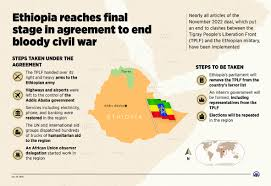Hi all, how is everyone doing, I hope all is good with and those
you care about, this week we are still in Africia and the country is Ethiopia a
county that many will have heard of in different commercials for UNICEF.
Ethiopia, in the Horn of Africa, is a rugged, landlocked country
split by the Great Rift Valley. With archaeological finds dating back more than
3 million years, it’s a place of ancient culture. Among its important sites are
Lalibela with its rock-cut Christian churches from the 12th–13th centuries.
Aksum is the ruins of an ancient city with obelisks, tombs, castles and Our
Lady Mary of Zion church.
In 1931, Emperor Haile Selassie formally requested that the
international community use the name Ethiopia instead of the exonym Abyssinia,
and the issuing Bank of Abyssinia also became the Bank of Ethiopia.
The capital is Addis Ababa, which is in the highlands bordering the Great Rift Valley, is the country’s commercial and cultural hub.
Located in the capital is a National Museum which exhibits
Ethiopian art, traditional crafts and prehistoric fossils, including replicas
of the famous early hominid, "Lucy."
It has a population of around 126 million, this may be due to a very high fertility of 4.4 children per woman. The combination of a high birth rate and relatively low life expectancy means that Ethiopia is a young country. 41.5 percent of the population is below 15 years and only 3.3 percent is above 65.
The currency is the birr it is subdivided into 100 santims.
The national animal is the lion, and its national flower is the calla lily. The national bird is the Stresemann's bush crow, also known as the Abyssinian pie, bush crow.
The Flag of Ethiopia consists of a green, yellow, and red tricolour with the national emblem, a golden pentagram on a blue disc, superimposed at the centre.
The star represents the unity of all Ethiopian nationalities,
its rays the bright prospects for their future. Blue is for peace, yellow for
hope, justice, and equality. Red represents sacrifice for freedom and equality,
while green is equated with labour, development, and fertility.
Religion in Ethiopia consists of a number of faiths. Among these mainly Abrahamic religions, the most numerous is Christianity totalling at 67.3%, followed by Islam at 31.3%. There is also a longstanding but small Ethiopian Jewish community.
Christianity in Ethiopia dates back to the ancient Kingdom
of Aksum, when the King Ezana first adopted the faith in the 4th century AD.
This makes Ethiopia one of the first regions in the world to officially adopt
Christianity. Various Christian denominations are now followed in the country.
This is not a country you want to go visiting in face a search online will tell you to avoid non-essential travel to Ethiopia due to civil unrest, violence, armed conflict and crime. The security situation can deteriorate without warning. This advisory excludes Addis Ababa where you should exercise a high degree of caution.
The government of Ethiopia is the federal government of
Ethiopia. It is structured in a framework of a federal parliamentary republic,
whereby the prime minister is the head of government and the commander-in-chief of the Ethiopian Armed Forces. The prime
minister is the most powerful political figure in Ethiopian politics. The
official residence of the prime minister is the Menelik Palace in Addis Ababa.












Ethiopia has always interested me. It is believed by the Ethiopians that the ark of the covenant is there at a church with 24/7 security. Apparently Queen Sheba and King Solomon brought it there. I remember 40 some years ago (mid 1980’s) when the Ethiopian Jews were leaving to go to Israel - over 20,000 over a 10 year period. Interesting culture.
ReplyDeleteAre you going to research Somalia?
I can do Somalia in fact I just made a note so I can do that country next. There was more to Ethiopia then I first thought and what you shared was very interesting to me, thank you for that info.
DeleteVery interesting - I honestly never thought about Ethiopia.
ReplyDeleteI don't want to do just the countries most of us are familiar with
DeleteI am pleased you liked the post
I had heard of Abyssinia and Ethiopia. Didn't realize they were the same country--lol! I guess that's what happens when you are so old, learned geography so very long ago, and also had some old teachers. I looked it up and the name was changed in 1931 and I wasn't even born for another 20 years after that. So I'm not exactly sure where I heard about the country of Abyssinia. Just another puzzle in my life--lol! :)
ReplyDeleteYeah I knew of both names didn't realise it was the same country either. Countries that change their names can be confusing at times
DeleteFascinating history this one. The cradle of life so to speak. I'm surprised they have such a high birth rate.
ReplyDeleteMore fascinating then I first thought
DeleteSuch a long, rich history in this country, Jo-Anne. Thanks for the info!
ReplyDeleteThat it is and you're welcome
DeleteA country with an interesting culture and history. A country I will probably never visit.
ReplyDeleteA country I will never visit also but an interesting one
DeleteWe had a co-worker from there who's name came out in English as Mercy. He was pretty cool, known for his non-eating of meat, his artistic skills, and for trying to come to work on Labor Day.
ReplyDeleteI guess labour day holiday wasn't something he was use to what a cool name Mercy
Delete